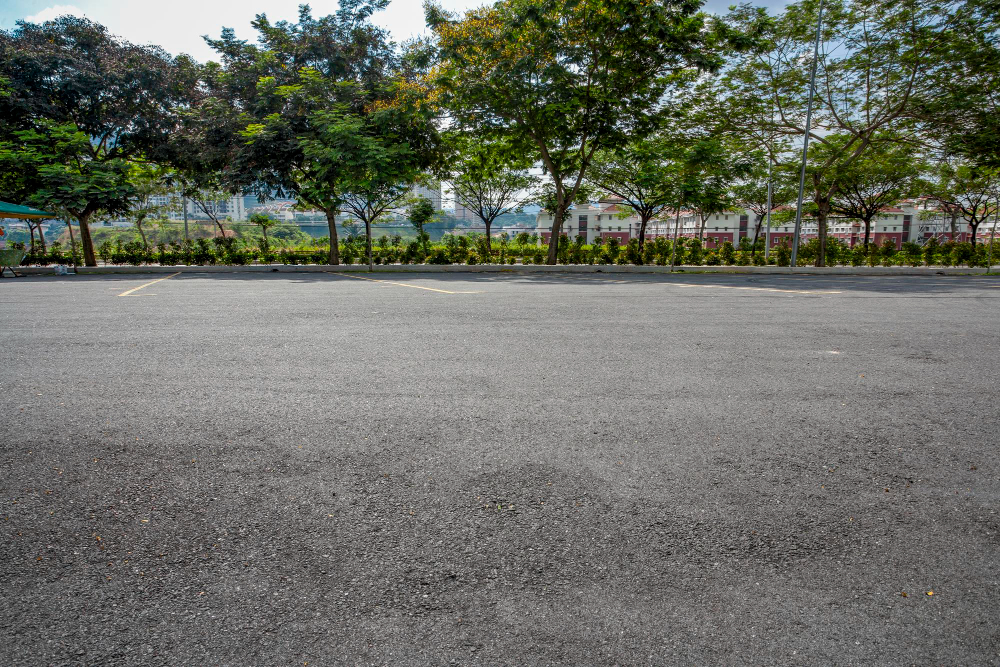Unveiling the Advantages of Asphalt Over Concrete

In the eternal debate of asphalt versus concrete, there’s an unsung hero often overlooked by the casual pavement observer: the resilient and eco-friendly asphalt. Despite its reputation as the more utilitarian choice, especially in roadway construction, the black horse of the paving world has a lot more under its sleeve than one might think, particularly when it comes to maintenance and repair.
If you’re about to pave your driveway, parking lot, or even reconstruct a major roadway, it’s high time to consider what lies beneath those wheels. In this detailed breakdown, we explore the numerous benefits asphalt offers over its sturdier counterpart, focusing on how it can outshine concrete when it comes to cost, environmental impact, and everyday convenience.
Asphalt’s Bouquet of Benefits
Environmental Edge
To many, concrete might seem like the greener choice, with its perceived permanence and recycled aggregate potential. However, it takes a significant environmental toll to produce concrete, with high levels of energy consumption and CO2 emissions. Asphalt, on the other hand, is not as energy-intensive in its production, and today’s technologies for recycling allow it to be the pavement of choice for environmentally conscious projects.
Cost Considerations
When initial installation cost is at play, concrete might appear the more sensible choice due to its longer lifespan. But when we look at the bigger picture, asphalt stands out for its lower initial cost and significantly more affordable maintenance over time. The sealing and resurfacing of an asphalt road, for example, is far more cost-effective than repairing a cracked or potholed concrete surface.
Speed and Safety
Did you know that asphalt roads have better skid resistance than concrete, especially when wet? This small detail could save lives, especially in heavily trafficked or urban areas. Additionally, when it comes to construction or repairs, asphalt surfaces typically require shorter curing times, resulting in less disruption for drivers and a faster return to regular traffic patterns.
Noise Reduction
The hum of traffic over the pavement is an unavoidable part of many urban settings. However, asphalt’s superior noise reduction qualities mean that it produces fewer decibels than the average concrete road. This is not only a benefit for noise pollution but also for the well-being of communities that live close to road networks.
Resistance to Weather and Wear
In colder climates, the freeze-thaw cycles can be detrimental to concrete roads. Asphalt, being more flexible, can accommodate these changes without surface damage. Its darker hue also absorbs more heat, helping to melt snow and ice faster, leading to safer driving conditions.
The Sealcoating Secret
Longevity Factor
The application of a quality sealcoat is the holistic care plan for asphalt, keeping it supple and resistant to the elements. Regular sealing extends the life of your asphalt pavement, reducing the frequency of costly repairs and increasing its overall durability.
Aesthetic Appeal
We often take for granted the clean, sleek look of freshly-paved asphalt. Sealcoating helps to maintain this look, making your property or road network more appealing.
Operational Optimization
An asphalt surface that is well-maintained through sealcoating will also require less effort for snow and ice removal, improving overall operational efficiency for corporate campuses, airports, and city streets alike.
Reliable Pavement Maintenance: Your Sealcoating Specialist in Lake County, FL
For those looking to ensure that their asphalt surfaces stand the test of time and traffic, Reliable Pavement Maintenance in Lake County, FL is the professional service you can rely on. Specializing in cutting-edge sealcoating techniques, their team guarantees superior quality and a finish that will last. If you need help with sealcoating in Lake County, FL, contact them today to request free estimates.
The next time you're faced with a pavement decision that may seem as black and white as asphalt and concrete, don't be quick to assume that the former is merely a by-the-book choice for the budget-conscious. It's an eco-friendly, cost-effective, and high-performing solution that deserves serious consideration — whether you're navigating home renovations or municipal improvements. Trust in the caterpillar that transforms a black road into a butterfly smooth enough to land a plane on.